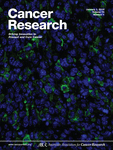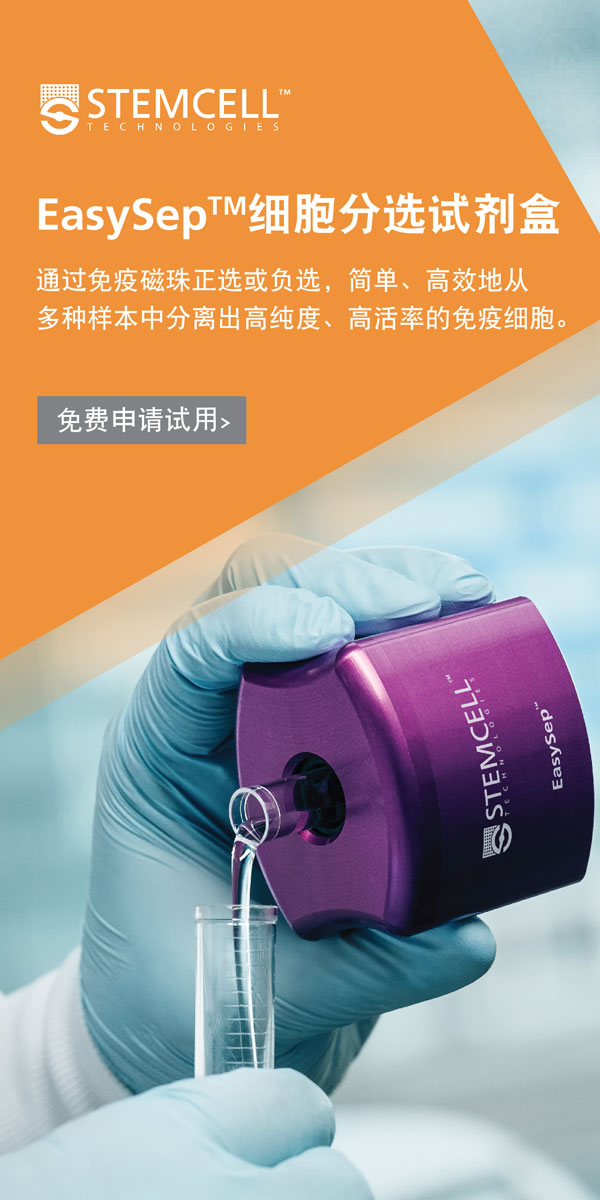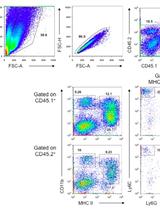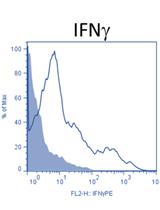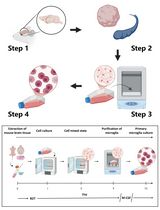- EN - English
- CN - 中文
Purification of Tumor-Associated Macrophages (TAM) and Tumor-Associated Dendritic Cells (TADC)
肿瘤相关巨噬细胞(TAM)和肿瘤相关树突细胞(TADC)的纯化
发布: 2014年11月20日第4卷第22期 DOI: 10.21769/BioProtoc.1294 浏览次数: 28355
评审: Hsin-Yi ChangHongLok LungAnonymous reviewer(s)
Abstract
Tumors are heterogeneous microenvironments where complex interactions take place between neoplastic cells and infiltrating inflammatory cells, such as tumor-associated macrophages (TAM) and tumor-associated dendritic cells (TADC). The relevance of tumor-infiltrating mononuclear myeloid cells is underscored by clinical studies showing a correlation between their abundance and poor prognosis (Laoui et al., 2011). These cells are able to promote tumor progression via several mechanisms, including induction of angiogenesis, remodeling of the extracellular matrix, stimulation of cancer cell proliferation and metastasis and the inhibition of adaptive immunity (Laoui et al., 2011). Moreover, mononuclear myeloid cells are characterized by plasticity and versatility in response to microenvironmental signals, resulting in different activation states, as illustrated by the presence of distinct functional TAM subsets in tumors (Movahedi et al., 2010; Laoui et al., 2014). Here, we describe a valuable isolation technique for TAM and TADC permitting their molecular and functional characterization.
Keywords: Tumor-associated macrophages (肿瘤相关巨噬细胞)Materials and Reagents
- Mouse
- RPMI-1640 medium (RPMI) (Life Technologies, catalog number: 52400-041 )
- Collagenase I (Worthington Biochemical, catalog number: LS004214 )
- Collagenase IV (Worthington Biochemical, catalog number: LS004209 )
- DNase I (Worthington Biochemical, catalog number: LS002060 )
- Hank’s buffered salt solution (HBSS) (Life Technologies, Gibco®)
- NH4Cl (Merck KGaA)
- KHCO3 (Merck KGaA)
- EDTA (Duchefa Biochemie)
- Fetal calf serum (FCS) (Life Technologies, Gibco®)
- Lymphoprep (Axis-shield, catalog number: 1114547 )
- LS colums (Miltenyi Biotec, catalog number: 130-042-401 )
- Anti-CD11b microbeads (Miltenyi Biotec, catalog number: 130-049-601 )
- Anti-CD11c microbeads (Miltenyi Biotec, catalog number: 130-052-001 )
- Purified CD16/CD32 (FcBlock) (clone 2.4G2) (BD Biosciences, catalog number: 553142 )
- PE-Cy7-conjugated anti-CD11b antibody (clone M1/70) (BD Biosciences, catalog number: 552850 )
- AF647-conjugated anti-Ly6C antibody (clone ER-MP20) (Bio-Rad Laboratories, AbD Serotec®, catalog number: MCA2389A647 )
- PerCP-Cy5.5-conjugated anti-I-A/I-E (MHC-II) antibody (clone M5/114.15.2) (BioLegend, catalog number: 107626 )
- FITC-conjugated anti-Ly6G antibody (clone 1A8) (BD Biosciences, catalog number: 551460 )
- PE-conjugated anti-SiglecF antibody (clone E50-2440) (BD Biosciences, catalog number: 552126 )
- PE-conjugated anti-CD11c antibody (clone HL3) (BD Biosciences, catalog number: 553802 )
- Tumor digestion medium (see Recipes)
- Erythrocyte lysis buffer (see Recipes)
- MACS buffer (see Recipes)
- Sorting buffer (see Recipes)
- Complete medium (see Recipes)
Equipment
- Polyester filters cut in 10 x 10 cm squares (thread diameter 70 μm) (Spectrum® Laboratories, catalog number: 146490 )
- 6-well plates (Greiner Bio-One GmbH, catalog number: 657185 )
- 10 ml syringes (Omnifix, catalog number: 473203 )
- BD Falcon 50 ml polypropylene tubes (BD Biosciences, catalog number: 2070 )
- BD Falcon 15 ml polypropylene tubes (BD Biosciences, catalog number: 2096 )
- BD Falcon 5 ml polypropylene round-bottom tube (BD Biosciences, catalog number: 352063 )
- Sterile culture hood
- Surgical scissors and forceps
- 37 °C, 5% CO2 cell culture incubator
- Pipettes
- Centrifuges
- Shaker
- Microscope
- MidiMACSTM Separator and MultiStand (Miltenyi Biotec, catalog number: 130-042-301 )
- Multicolour FACS sorter (BD Biosciences, Aria flow cytometer)
Procedure
文章信息
版权信息
© 2014 The Authors; exclusive licensee Bio-protocol LLC.
如何引用
Laoui, D., Overmeire, E. V., Keirsse, J., Movahedi, K. and Ginderachter, J. A. V. (2014). Purification of Tumor-Associated Macrophages (TAM) and Tumor-Associated Dendritic Cells (TADC). Bio-protocol 4(22): e1294. DOI: 10.21769/BioProtoc.1294.
分类
癌症生物学 > 肿瘤免疫学 > 动物模型 > 细胞分离和培养
免疫学 > 免疫细胞分离 > 巨噬细胞
细胞生物学 > 细胞分离和培养 > 细胞分离
您对这篇实验方法有问题吗?
在此处发布您的问题,我们将邀请本文作者来回答。同时,我们会将您的问题发布到Bio-protocol Exchange,以便寻求社区成员的帮助。
Share
Bluesky
X
Copy link


